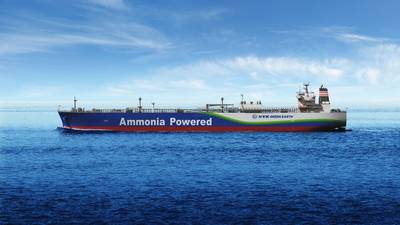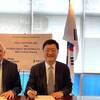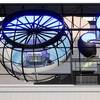Japan Takes the Lead on Ammonia as Maritime Fuel
Late last year Japanese maritime leaders – Nippon Yusen Kabushiki Kaisha (NYK), Japan Engine Corporation, IHI Power Systems Co., and Nihon Shipyard Co., Ltd. – signed a series of contracts to buid the world's first ammonia-fueled medium gas carrier (AFMGC) equipped with Japan-make engines. The target is a completed ship by November 2026.
While the project is significant, hurdles remain, namely:
- While development work is underway, today there is not yet a dual-fuel ammonia engine on the market, and
- The international rules for ships using ammonia as fuel are not yet in place.
On the latter, the International Maritime Organization (IMO) is currently discussing the issue, and the members of this pioneering project see it as instrumental to gain knowledge and insight from the construction and operation of AFMGCs. The Consortium aims to work closely with ClassNK and Japan’s Ministry of Land, Infrastructure, Transport and Tourism (MLIT) to contribute actively to international rulemaking.
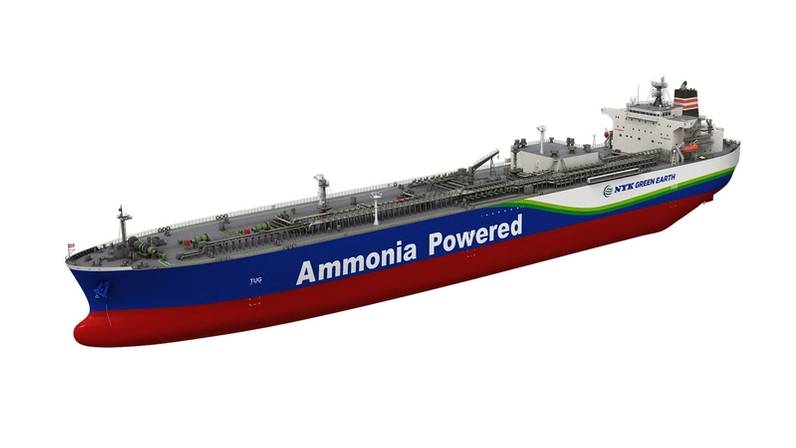 Image courtesy NYK
Image courtesy NYK
The Ship
The ship as currently designed is a 40,000 cu. m. ammonia fuel ammonia carrier, to be built by Japan Marine United Corporation, Ariake Shipyard and powered by an ammonia fuel, dual-fuel two-stroke engine produced by Japan Engine Corporation, planned for delivery in November 2026.
In addition to the main engine, the ship will have an ammonia fuel dual-fuel four-stroke engine produced by IHI Power Systems, an auxiliary engine that drives the generator that provides the ship's electricity.
Work remains to complete the engines, and ammonia fuel dual-fuel engines must co-fire ammonia with fuel oil as pilot fuel, and a high ammonia co-firing ratio is required to achieve a high GHG reduction rate. The consortium aims to achieve the following co-firing rates:
■ Main engine: an ammonia fuel mixed combustion rate up to 95%
■ Auxiliary engine: an ammonia fuel mixed combustion rate of 80% or more
■ Entire ship: GHG reduction rate of 80% or more
To date the consortium sees the main challenges in designing and developing ammonia-fueled vessels as:
■ Flame retardancy of ammonia: Because ammonia is a flame retardant, developing advanced technologies for stable combustion in engines is necessary.
■ Treatment of nitrous oxide (N2O): Nitrous oxide (N2O), which has a greenhouse effect of approximately 265 times that of CO2, may be generated during ammonia combustion. Technology is needed to reduce and treat nitrous oxide emissions.
■ Ammonia toxicity: Because ammonia is toxic, the vessel must be designed to prevent leakage from the piping and tanks. Even in the event of leakage, measures must be taken to protect the safety of the ship's crew.
The four companies designed a prototype vessel that overcame these challenges, and the prototype vessel obtained an Approval in Principle (AiP) in September 2022 after a safety verification process that included confirmation of the safety concept and risk assessment by ClassNK. The acquisition of AiP is in anticipation of the approval of an alternative design. After further research and development, the consortium determined that the prototype ship had reached a level sufficient for social implementation, particularly in safety and environmental friendliness, and decided to build the ship.
In May 2023, IHI Power Systems reportedly achieved the world’s first stable combustion of fuel ammonia at an 80% co-firing rate with fuel oil in a 4-stroke engine that is planned to be used as an auxiliary engine for an AFMGC. This experiment confirmed that emissions of nitrous oxide (N2O) and unburned ammonia from the engine were virtually zero and that there was no ammonia leakage during operation and after shutdown. In the same month, Japan Engine Corporation began mixed firing operations on a large, low-speed, two-stroke engine to optimize engine performance and verify safety. Based on the data obtained from these demonstrations, the consortium has determined that it is generally on track to achieve sufficient environmental performance by the engines. The consortium will continue further research and development with the ultimate target of achieving 80% or more GHG reductions for the entire fleet.
Toward the completion of the vessel in November 2026, the consortium will manufacture the main and auxiliary engines, begin detailed studies for the vessel's construction, and prepare an operation manual for actual operation. After the ship is completed, the consortium will continue to operate the vessel for demonstration purposes to confirm the vessel's performance, including environmental friendliness and the practicality of the operation manual, and to provide user feedback to shipbuilders and marine equipment manufacturers for further improvements. We will strive to build a development cycle as a "first mover" in developing ammonia-fueled vessels.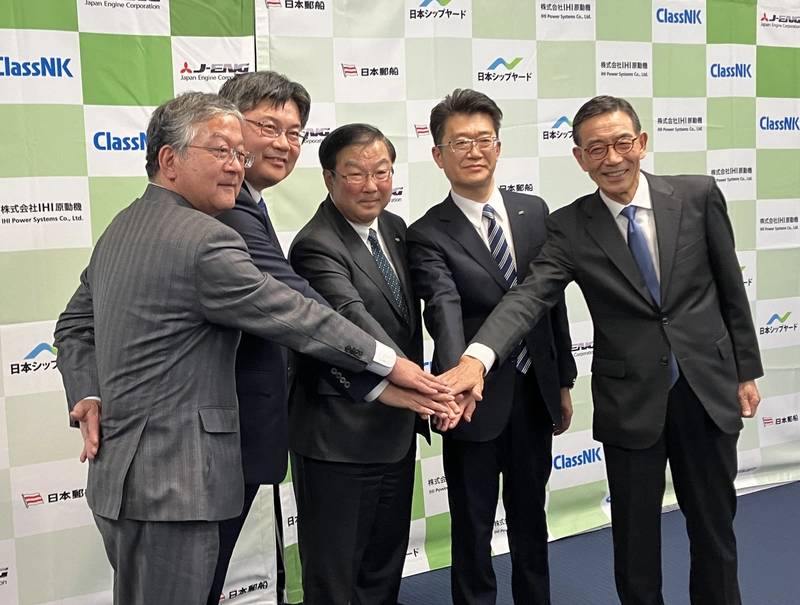 A consortium of five Japanese companies has pulled together to design, build and deliver a world-first ammonia dual fuel ship. The companies include: Nippon Yusen Kabushiki Kaisha (NYK); Japan Engine Corporation; IHI Power Systems Co., Ltd.; Nihon Shipyard Co., Ltd.; and Nippon Kaiji Kyokai (ClassNK). Image courtesy NYK
A consortium of five Japanese companies has pulled together to design, build and deliver a world-first ammonia dual fuel ship. The companies include: Nippon Yusen Kabushiki Kaisha (NYK); Japan Engine Corporation; IHI Power Systems Co., Ltd.; Nihon Shipyard Co., Ltd.; and Nippon Kaiji Kyokai (ClassNK). Image courtesy NYK



